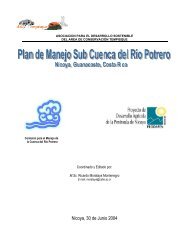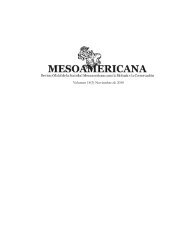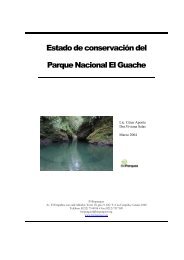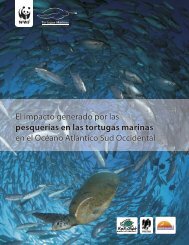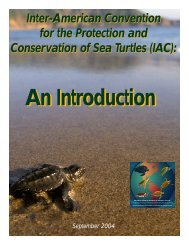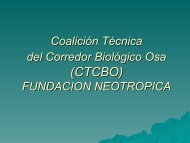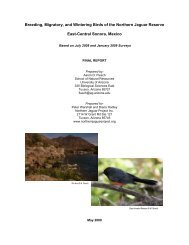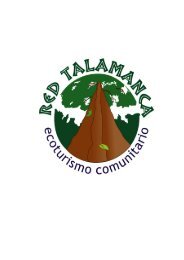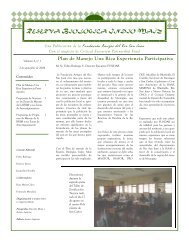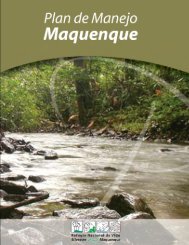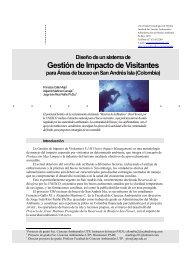Una visión para el futuro, una agenda para hoy - Eco-Index
Una visión para el futuro, una agenda para hoy - Eco-Index
Una visión para el futuro, una agenda para hoy - Eco-Index
Create successful ePaper yourself
Turn your PDF publications into a flip-book with our unique Google optimized e-Paper software.
The S<strong>el</strong>va Maya <strong>Eco</strong>regional Planis important for conservationbecause:• It identifies and describes theuniverse of areas necessary forconserving biological diversity.• It presents a ConservationAgenda to steer theinvestments of large public andprivate donors, nationalgovernments and the privatesector.• It enables institutions to focustheir conservation efforts onpriority areas and issues.• It unites actors around an interinstitutionalenvironmental<strong>agenda</strong> for integration inregional dev<strong>el</strong>opment plans.• An area’s state of conservationcan be assessed by comparingconservation goals with currentconditions.The <strong>Eco</strong>regional Plan:A Vision for the Future,An Agenda for TodayWhat is the Maya Forest <strong>Eco</strong>regionalPlan?It is a framework orienting efforts to conserveecosystems and representative species of the region’sbiodiversity, and consists of:• A system of information on regional biophysical andecological conditions and human activities• A network of areas important for conservation• An array of strategies, and• Institutional alliancesUses Thus FarThe S<strong>el</strong>va Maya <strong>Eco</strong>regional Plan has already beenuseful for several important processes since itsformulation began in 2003:• The official institutions that administer the protectedarea systems in Mexico, B<strong>el</strong>ize and Guatemalasigned a memorandum of understanding forcooperation in the conservation of protected areasand agreed to utilize the information, priority sitesand conservation strategies contained in the MayaForest <strong>Eco</strong>regional Plan.• The information generated in this process hasserved as input for analyzing gaps in thenational systems of protected areas.Components of the <strong>Eco</strong>regional Plan have beenincorporated in the National Protected AreasPolicy and System Plan (NPAPSP) of B<strong>el</strong>ize, andin processes directed by CONABIO andCONANP, in Mexico, and CONPA, in Guatemala.• In Mexico, information from the <strong>Eco</strong>regionalPlan has provided focus for the CONAFORforestry incentives program.• The Plan has provided base information toguide land use and ecological planning inYucatan, Quintana Roo, Campeche, Chiapas,Oaxaca, Veracruz and Tabasco.• In Guatemala, the Secretariat of the Presidencyhas employed this input to draft the Programfor Sustainable Dev<strong>el</strong>opment of the MayaBiosphere Reserve.13




